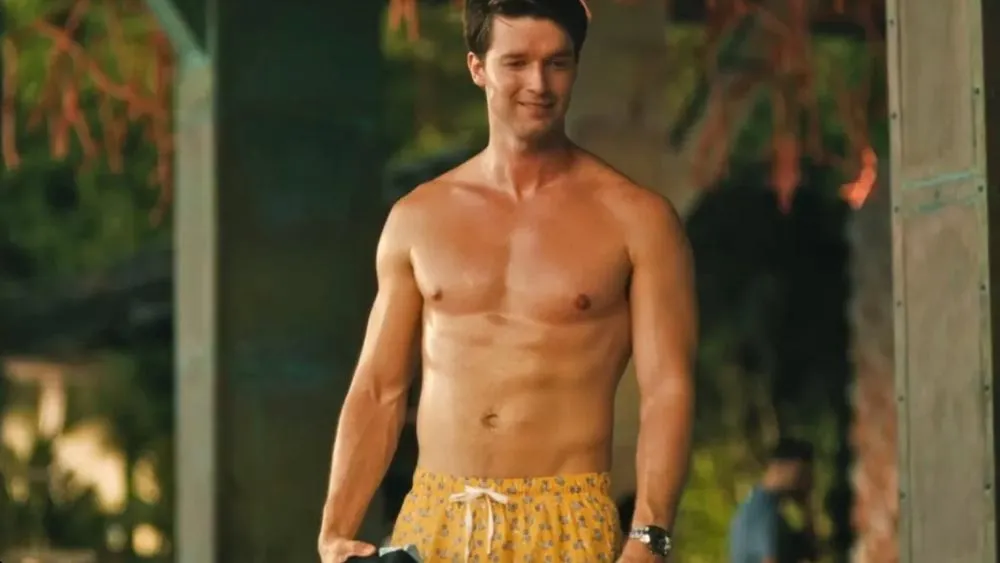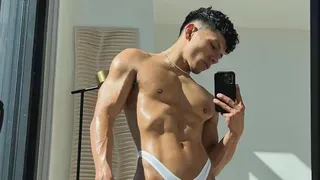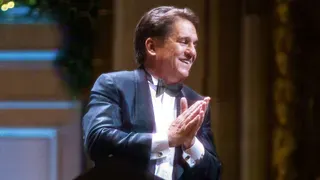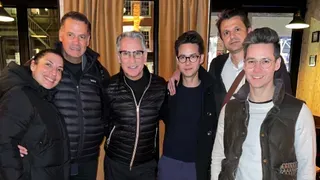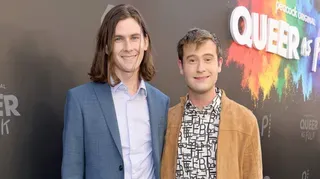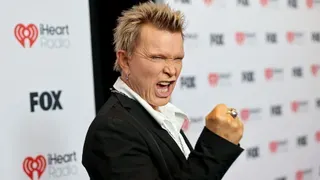July 19, 2023
On the EDGE: 'Barbie' May Look Queer; But Looks are Deceiving
Robert Nesti READ TIME: 6 MIN.
Editor's note: this story was published last summer when "Barbie" was released.
From the looks of things, "Barbie" is being seen as one of the queerest movies of the year. With its gorgeously pink alternative universe – called "Barbie Land" – the film appeals to queer sensibilities. What else can be said about a film that features a production number of dozens of hunky Kens singing about themselves led by the scene-stealing Ryan Gosling? Gosling makes a sweet, dim Ken until he learns of the patriarchy and the toxic masculinity that goes with it, which drives the narrative in the film's second half.
Memes like this place Ken as a strictly cis male character – first, sweet and dim, then dim and aggressively toxic. Gosling is terrific in his transformation, never breaking character, which is the key to both his and Margot Robbie's superlative performances. But as the film progressed, it became apparent that while the film seems queer, it really isn't. Spoiler alert: The only overt mention of queer identity occurs when Ken travels to the real world and is cruised by a pair of stereotypical gays while walking the Venice Beach boardwalk.
On her journeys, Barbie never meets a queer character, or even learns about queer culture. She is never cruised by a woman in the real world, which would have been a funny plot meme. Nor, aside from the Venice Beach moment, does Ken. The real world of "Barbie" appears contemporary, but contains the values of the time when Barbie was invented – 1959 – when queers were largely invisible. This is underscored by the fact that the most prominent queer actor in the film, Kate McKinnon, plays "Weird Barbie," a character who is repeatedly bullied and shunned by the other Barbies, and is forced to live in her dreamhouse on top of a hill with little contact with others.
Since when this story was first published last summer, "Barbie" became 2023's highest grossing film, raking in nearly $1.5 billion worldwide. And with eight Academy Award nominations, is one of the year's most honored; though missing were nods for director Greta Gerwig and star Margot Robbie. But even prior to release, the film was highly anticipated. As Time Magazine puts it: "If you are wondering whether 'Barbie' is a satire of a toy company's capitalist ambitions, a searing indictment of the current fraught state of gender relations, a heartwarming if occasionally clichéd tribute to girl power, or a musical spectacle filled with earworms from Nicki Minaj and Dua Lipa, the answer is yes. All of the above. And then some."
But one thing it isn't – aside from its look and resemblance to other queer films ("Hairspray," comes immediately to mind) – is very queer. In some ways the filmmakers want to have it both ways. In an interview, Robbie said that there are no queer storylines for Barbie and Ken because they are all dolls. So, they don't have actually have sexual orientations because they don't have any reproductive organs, we figured."
Ken, it turns out, is only an extension of Barbie's imagination, invented by her for male companionship. This leads to some funny identity issues for Ken, who is only happy when Barbie pays attention to him; but also raises the question as to why Barbie, and the film itself, conform to a heteronormative identity? Could it because "Barbie" is so corporately determined that nothing beyond this norm could be explored by director Greta Gerwig, who wrote the script with her long-time partner Noah Baumbach? Of all the Barbies in the universe, there is no Gay Barbie. Or Gay Ken. Nor in the real world are there any scenes of young boys playing with Barbies or Kens. There are, according to Time, some 175 different Barbies, with different combinations of body shapes, skin tones, and hair type, with Robbie representing the original, called "Stereotypical Barbie". But because Barbie and Ken lack sexual organs, they can't be queer. That is because in the film, queer is only defined by sexual function, not by the larger culture, As the Bud Light controversy proved, for corporations (like Mattel), any thought of overt gay culture -- such as a gay doll -- is frowned upon because it won't play in Oklahoma City. Mattel and Warner Brothers are banking on the film's success to a mainstream audience. But to define a community simply by its sexual functions is disingenuous and plays to rising conservative memes about gays as sexual predators. And it simply isn't true. No doubt many in the queer community were aware of their orientation well before puberty, which undermines Robbie's response.
Barbie, was the creation of Ruth Handler., who brought her idea to Mattel. In speaking with Axios, Handler's biographer Robin Gerber says Handler's inspiration came because "girls wanted to play at being grown up." The original Barbie was a teenage fashion model, and she was always a careerist, Gerber tells Axios. "There was never a time when Barbie was just alone in the house raising kids," she said. "Ken only came out a couple of years later because little girls clamored for a boyfriend for her."
Interestingly, with all the press the film is receiving, there is little mention of it portraying any queer identity, instead the film's inherent queerness come from its look and feel, not content. In the real world, though, Barbie could be anything to anyone, even a way to play with alternative relationships, such as queer ones. In the Time article, actress Alexandra Shipp, who plays an author Barbie and rode on the Barbie float in the West Hollywood Pride Parade this year, said that with Barbie she was able to explore her sexual identity. "When you're a kid, your toys are an extension of who you are and how you can exist in the world as an adult," says Shipp. 'Sure, I had Kens, but when I played house, I had two Barbies raising a Skipper.'"
But watching "Barbie," it became apparent that while Ken attempts to kiss her at one moment, there would not be one when Robbie attempts to kiss a Barbie. Or see Gosling cuddling with another Ken on the beach. Or even Alan – the only male in Barbie World who is not a Ken. Played by Michael Cera, he's the same awkward outsider that Weird Barbie is – which was pretty much the way LGBTQ+ people were seen in 1959 when Barbie first appeared. Was the queerwashing of Barbie due to corporate involvement? Is Robbie's answer to why there are no gay Barbies or Kens just a glib afterthought? Whatever the reason, "Barbie" is fun, and she is amazing in it; but the film itself may leave a queer person wondering why they're not really invited to the party.
Robert Nesti can be reached at [email protected].
